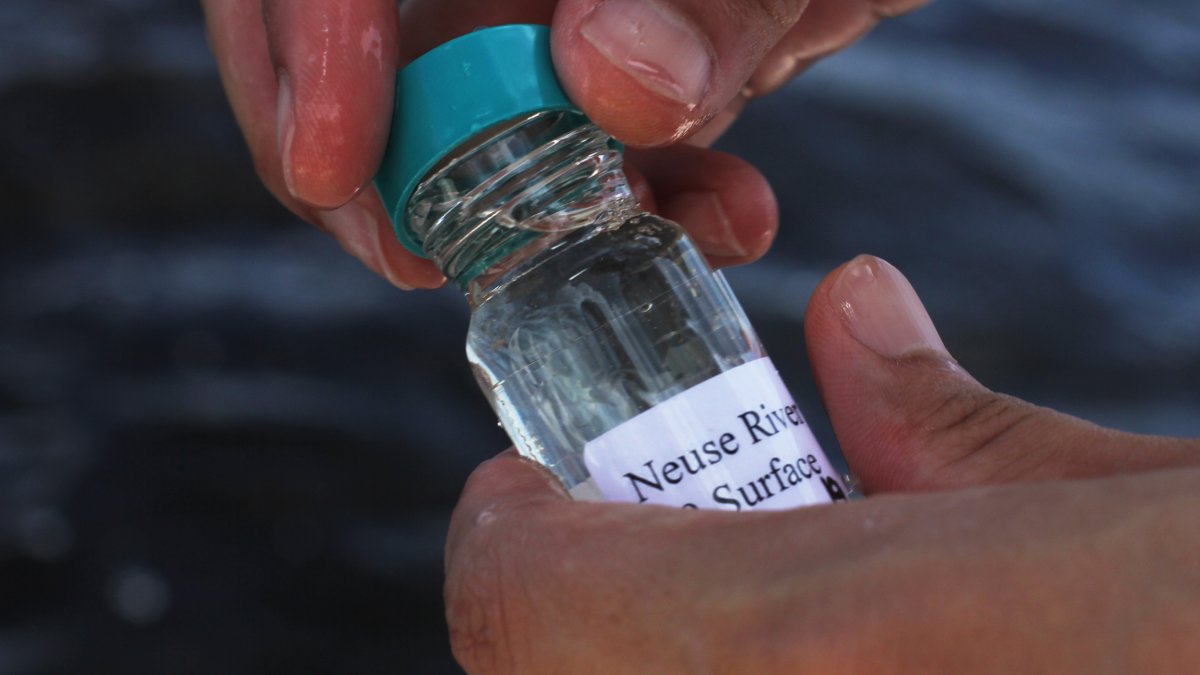Sequencing the sea
Carolina scientists are taking a new, cutting-edge approach to understanding exactly what’s going on in the water.

An offensive stench fills the salty air above the lower part of the Neuse River Estuary near downtown New Bern, North Carolina. It’s the type of smell that hits you slowly – and then all at once, stinging the inside of your nose.
While the smell invades your olfactory senses, the cackles of birds rings through your ears. Hundreds of seagulls zoom in circles just above the surface of the water.
“Sure sign of a fish kill,” says Jeremy Braddy, a researcher from the UNC Institute of Marine Sciences, staring at the mass of birds swarming like vultures.
“How often does this happen?” asks Weida Gong, another UNC researcher, who just moved here from China.
We’re zooming down the Neuse on a small fishing boat—fortunately we’re not here to fish—the boat is packed full of water quality testing equipment. “First you see the seagulls, and then the smell hits you. Just wait for it.”
“A couple times a year,” Braddy says.
Fish kills are one repercussion of a phenomenon called eutrophication. When too much nitrogen enters a water body, algae blooms form, producing a suffocating effect on the water and the fish in it. A textbook example is the Neuse River—part of the Albemarle-Pamlico estuary system which serves as a nursery for 90 percent of commercial seafood caught in North Carolina, according to the NC Division of Tourism.
Neuse River. Pollution. Fish kills. You’ve heard this before. For the past several decades, environmentalists have voiced concerns about it, journalists have reported on it, and marine scientists have looked for answers to why and how this happens.
But now some scientists are taking a new, cutting-edge approach to understanding exactly what’s going on in the water.
Collecting new information from the same water
Weida Gong, a Ph.D. student from the department of marine sciences, is also on board the boat today. Both Gong and Braddy will collect dozens of water samples from 11 different stations along the estuary, but they will employ different methods to study them—and ultimately produce two very different data sets. Braddy, a member of the Paerl lab at the UNC Institute of Marine Sciences, will measure parameters like temperature, salinity, nutrients, chlorophyll concentrations and pH — the same measurements get taken every two weeks throughout the spring, summer, and fall.
“Estuaries are so dynamic and they change from year to year,” Braddy says. “This routine monitoring allows us to determine trends.”
Gong, on the other hand, will use his samples to determine what’s happening inside the tiny microscopic organisms known as plankton that inhabit this water—on a molecular level.
“We are combining traditional methods with molecular level approaches,” Gong explains. “To do this, we’re using lab work and computers together.”
Click here to keep reading.
See also: Researchers use genes as early warning system for harmful algae blooms




